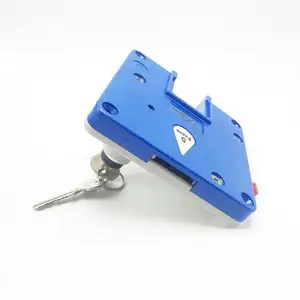(2012 products available)





































































































































































A coin hopper for game machine is a device that dispenses coins after the game has been played, and it is registered to the game machines. These hoppers are popular in arcades and casinos. There are several types of coin hoppers, and they include the following:
Coin hoppers are essential components in many gaming and vending machines that enhance their functionality and improve user experience. Here are some common application scenarios:
Arcade Games
Coin hoppers are vital for the operation of traditional arcade games. They accept coins from players and dispense tokens or coins for continued play. The hoppers are automated to ensure players get the tokens immediately for their next game.
Vending Machines
Vending machines use coin hoppers to receive payment from customers. The machines then dispense snacks, drinks, and other items. Modern machines also accept various payment methods apart from coins.
Ticket Redemption Machines
Coin hoppers are found in ticket redemption machines that are used in amusement parks and entertainment centers. Customers pay with coins to get tickets to access various attractions. The machines are automated to ensure customers get the tickets in a short time.
Gaming Machines
Coin hoppers are also used in gaming machines such as slot machines and poker machines. They receive coins from players and dispense winnings or tokens for continued play.
Coin-Operated Attractions
Coin hoppers are used in coin-operated attractions such as carousel rides, fortune-telling machines, and photo booths. They receive coins from users to activate the machines.
Amusement Parks
Coin hoppers are found in amusement parks. They are used in various attractions and arcade games to accept coins from users.
Merchandise Dispensers
Coin hoppers are used in coin-operated merchandise dispensers. They are able to sell small items like candy, toys, and other prizes.
Parking Meters
Coin hoppers are used in parking meters to receive coins for parking payments. They are also used in toll booths and other payment-related services.
Public Transportation
Coin hoppers are used in public transportation systems. They are used in buses, trains, and other modes of transport to receive fare payments from passengers.
Coin-Operated Laundry Machines
Coin hoppers are also used in laundry machines. They receive coins from users to activate the washing and drying cycles.
Below are some factors business owners should consider when purchasing coin hoppers for game machines to ensure they get reliable and efficient products:
Compatibility
The coin hoppers should be compatible with the game machines. Different game machines require specific types of coin hoppers. Therefore, buyers should check the specifications of the game machines and the coin hoppers to ensure they are compatible.
Capacity
Buyers should get coin hoppers in different capacities. A high-capacity coin hopper has a larger coin storage capacity, which allows it to operate for longer periods before being emptied. This reduces the frequency of emptying the coin hoppers. However, high-capacity coin hoppers take up more space. Therefore, business owners should find a balance between capacity and space requirements.
Reliability
Business owners should get coin hoppers from reputable manufacturers. Such manufacturers use quality materials to construct the coin hoppers to withstand wear and tear. Moreover, quality coin hoppers have a longer lifespan, and their performance is consistent.
Anti-jam technology
Business owners should get coin hoppers with anti-jam technology. This technology prevents the coin from getting stuck during processing. As a result, it reduces the chances of coin processing errors.
Anti-theft features
Buyers should choose coin hoppers with secure locking mechanisms. This feature is crucial for protecting the coin hoppers from theft. In addition, coin hoppers with anti-theft features secure the coins and protect them from being vandalized.
Electrical requirements
Coin hoppers require electrical power to operate. Therefore, buyers should ensure the coin hoppers' voltage and electrical requirements match the game machines' requirements.
Maintenance needs
Proper maintenance is crucial for the optimal operation of coin hoppers. Therefore, business owners should choose hoppers that are easy to clean and have easy maintenance requirements. This helps to keep the coin hoppers in good condition and extends their lifespan.
Q1: How does a coin hopper work?
A1: A coin hopper's primary function is to store and dispense coins. It receives coins from the coin validator and releases them upon request. The mechanism that releases the coins is controlled by an electromagnet and a rotating plate. When an electric pulse is sent to the electromagnet, the plate rotates and releases the coins onto a chute.
Q2: How often should coin hoppers be maintained?
A2: Coin hoppers should be maintained regularly, at least once a month, to prevent malfunctions. During maintenance, the hoppers should be cleaned to remove dirt and dust. Cleaning the components prevents coin jams and ensures accurate dispensing. Additionally, the hoppers should be inspected and lubricated to maintain optimal performance.
Q3: What types of coins can coin hoppers dispense?
A3: Most coin hoppers are designed to dispense specific coins. However, some models can handle different types of coins. The size and material of the coins vary from one model to another. Therefore, it is essential to know the types of coins the hopper can dispense to avoid malfunctions.
Q4: What are the common issues experienced with coin hoppers?
A4: Like any other device, coin hoppers experience issues from time to time. The issues include coin jams, overflows, and miscalculations. Most of the issues are caused by dirt and dust. Therefore, cleaning the hopper solves most of the problems. Other issues include faulty sensors and mechanical failures. In such cases, the hopper needs professional repair.